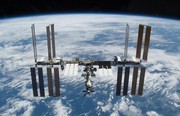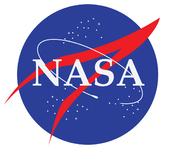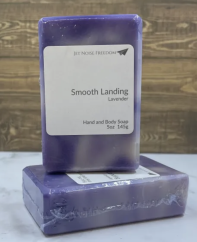
The International Space Station is governed by a treaty called the Intergovernmental Agreement on Space Station Cooperation, signed by all five entities involved in the ISS — Russia, Japan, Europe, Canada and the United States. When a crime is committed on the ISS, it states that the country whose national was involved has criminal jurisdiction, unless people from other countries were affected.
There are 4 space-related treaties that the U.S. is a party to:
1. The Outer Space Treaty
2. The Liability Convention
3. The Registration Convention and
4. The Return and Rescue Agreement
The Outer Space Treaty — or as some call it, “the Magna Carta of Space” — is a 50-year-old agreement that outlines how to peacefully explore space. All space-faring states are parties to the Outer Space Treaty. It includes 109 nations, with more joining regularly. The U.N.-approved document is the foundation of international space law. Its guiding principle is that space exploration should be a peaceful initiative and all nations should have free access to space. The Outer Space Treaty covers things like how to hold nations responsible for their space actions and rules to avoid polluting our solar system. It also addresses fair use of outer space and prohibits any nation from “appropriation of outer space, including celestial bodies.” How to interpret that clause has become contentious as the commercialization of space expands. Countries have differing interpretations — to some, it means no country can own territory in space, but others have applied it to ownership of anything, including extracted resources, absent an international agreement.
The Registration Convention requires registration with the United Nations before sending something to space and the Liability Convention states that a nation is liable for damage if its space object harms someone else’s. Under the Return and Rescue Agreement, if a party stumbles upon an astronaut in need, it must rescue him or her.
Several other issues have become increasingly dangerous:
1. The militarization of space
2. The exploitation of natural resources and
3. Space debris.
The biggest changes have been the development of technology and business and the militarization of space. The problems have increased significantly but the law has not kept pace with that.”
In 2019, President Trump announced the establishment of the U.S. military’s Space Command. Like the U.S., Russia and China are building space forces, and once you have a dedicated force, you’re preparing for war. Space offers tremendous benefits. We just need to keep up with the technology. Article 4 of the Outer Space Treaty addresses military use. It says that the moon and other celestial bodies must be used “exclusively for peaceful purposes.” The language doesn’t inherently prohibit military activity. Part of the problem is that most space objects are dual-use. Anything that can closely approach another space object, like the space shuttle sent to service the Hubble, also has the potential to be used as a weapon. The “peaceful purposes” limitation doesn’t apply to deep space activity. There, the bar is exclusively on nuclear weapons and weapons of mass destruction. There’s no prohibition on things like setting up military bases, conducting weapons testing, or bringing weapons into space, so long as they aren’t weapons of mass destruction and comply with other Outer Space Treaty requirements.
Another major concern voiced by many experts in the field is the increase in space debris. These pieces of left-behind, man-made objects lead to in-orbit collisions. They can be as large as a motorcycle and as small as a tool lost by an astronaut, and move around at fatal speeds, threatening people, space stations, and satellites that impact global commerce, commercial and military missions. Debris, which will multiply as the exploration and uses of space increase, has been created accidentally and deliberately. Every collision, breakup or fragmentation creates additional debris. For example, China launched a missile to strike down one of its aging satellites in 2007; the collision caused thousands of new pieces of debris. If debris causes damage or loss of life on the earth’s surface, the liability is on the launching state. But if the harm happens in space, he explained, it becomes murkier. If it’s in outer space, it’s a fault-based standard, which is difficult to assess. Among other things, the debris’ origin would need to be known and it would need to be big enough to track. As of March, there were 2,062 satellites orbiting Earth, more than 40 percent of which belonged to the United States. The nation’s overwhelming dependency on its space assets places it at a greater risk of space debris — deliberate or accidental.
There’s a commercial burst underway due to new technology, lower-cost access to space, and new business models, and as traditional space activities are revolutionized, new and complex legal issues crop up. Although the Outer Space Treaty says no nation may appropriate territory anywhere in space, it’s silent to individuals and corporate entities. Companies are already building models for space hotels, and soon we’re going to have commercial entities landing on and mining the moon. Space travel and tourism create a pressing need for legislation to ensure that private companies comply with the minimal OST obligations, adding that liability issues will become particularly relevant as suborbital flights begin in the next 12 to 18 months. China is planning to put the first space-based solar-power satellite into orbit and the FCC has received applications for thousands of new satellites for utilities like space-based Internet services.
And then others are debating what human rights are needed in space. The population of humans in space is going to continue to grow. There’s no Declaration of Human Rights that says humans have a right to oxygen or right to an open line of communication back to earth. Things have to evolve to protect humans in space.
Contact Me
Sarah Nilsson, J.D., Ph.D., MAS
602 561 8665
You can also fill out my
Get Social with Me
Legal Disclaimer
The information on this website is for EDUCATIONAL purposes only and DOES NOT constitute legal advice.
While the author of this website is an attorney, she is not YOUR attorney, nor are you her client, until you enter into a written agreement with Nilsson Law, PLLC to provide legal services.
In no event shall Sarah Nilsson be liable for any special, indirect, or consequential damages relating to this material, for any use of this website, or for any other hyperlinked website.
Steward of
I endorse the following products
KENNON (sun shields)










